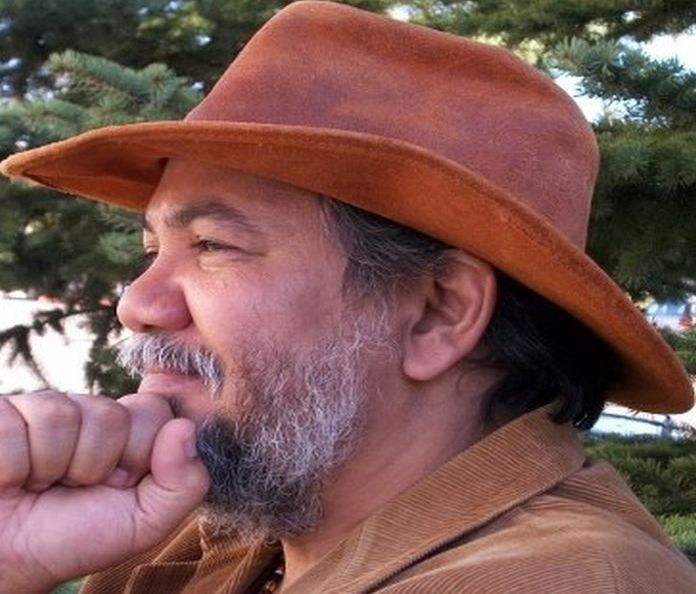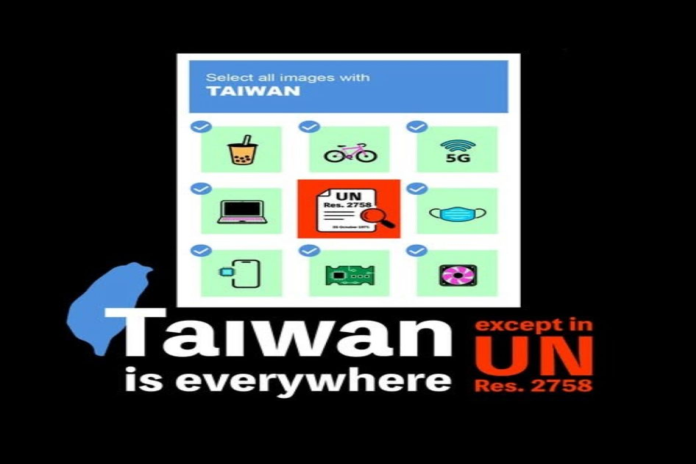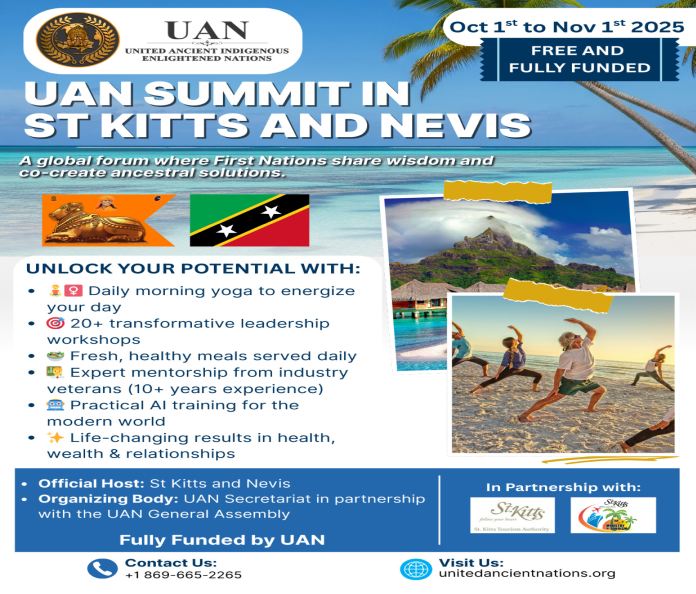By Johnny Commansingh
While studying at Fort Hays State University (FHSU) in the All American City of Hays, Kansas, a fellow student posed to me the question: “Do you have cars in Trinidad?” I calmly replied: “You should have asked me if we have roads?” Another student chimed in: “How do you get to Trinidad?” I answered: “By canoe…how else would we get there?” “What!” another one exclaimed. I went on to add that we paddle our way to the shore. When we get there we look right, we look left and right again then race for the bushes and grab a vine. “Grab a vine?” was the next question. “Yes we have to quickly grab a vine to make sure we stay elevated in the trees.” More students congregated as I spoke. I was a kind of oddity. Maybe this brown-skinned Trini looked like ‘Man Friday’ to this bunch of curious students. Who knows?
The conversation continued. I explained that we had to keep moving in the trees and know exactly where we are going. With the markings on the taped vines we could tell north, south, east and west. The vines were taped with 3M masking tape because it was the best quality tape for such a job. I told them that the only thing we import from America is 3M tape. My bit of ‘serious’ fiction brought out queries in the eyes of my listeners. Moreover, the thing that startled them was when I made it clear that a traveller on the vines must hold tight to the vine and do not slip and fall…or else.
One student was curious to ask: “Or else what?” My answer captured the attention of all: “There are understory dwellers. If you fall, they could make baby-back ribs or hamburger meat, depending on age. Sometimes you could smell the aroma of flesh burning on the makeshift grills.” All this time, I was laughing inside, until a young woman asked: “Have you eaten people?” I did not answer but gave her a strange gaze.
At that moment, I just broke away from the crowd and ran up the stairs of the Student Union, laughing breathlessly. All of this talk started with roads. And as I always remind people: ‘If you don’t know where you are going, any road will take you there.’ So here I am, saddled with my pet peeve, to reveal the kind of roads we have in Trinidad and Tobago (T&T).
It was the calypsonian Lord Kitchener (Aldwyn Roberts) who sang that “…the road make tuh walk on carnival day.” Of course, we could walk, jump and skip or even run and make a back flip on our wonderful roads. Wonderful because our roads leave me with such wonder as to who the hell was or is responsible for the state of our nation’s roads. Let me be clear! Driving a vehicle on the roads of Trinidad and Tobago presents with serious difficulties!
Make sure that you are not sleepy and the brakes are working properly. This is also a matter of concern for pedestrians. On these roads in Trinidad, a pedestrian could easily roll his or her ankle because it seems that Trinidad imports roads from the Moon, Mars or some other rugged distant planet.
Our roads are the best roads in the world for creating physical and definitely mental and untold spiritual unpleasantness; I could hear the silent ‘cussing’ and the use of expletives and/or invectives when people’s precious and expensive vehicles fall into the damned potholes. My analysis and synthesis of the potholed roads in T&T were partially summed up in my poem: Pothole Paradise.
Here are a few lines depicting how I felt:
There is an everlasting stench; although they sit on the bench
In the Red House, in parliament; there is a nasty ferment
Forgetting the little people; the country people
The poor people; the hard-working people
They who struggle and fight; to make it to work by day and by night
Through rain, through storm; O gawd man! O gorm!
On potholed roads, landslips; broken bridges, a risk for cars
Cave ins, landslides, sinkholes and lahars
Decadence! Subsidence; in front of their residence
Potholes like lakes; O gawd, mash brakes!
In there might harbor alligators and snakes
Before you enter; sit and ponder
Don’t know how deep? Stay awake, don’t fall asleep!
As axles and ball joints rattle; to get to work is a daily battle
But some still say; “Trinidad is nice. Trinidad is a paradise”
Yes! It’s true; a pothole paradise for me and you.
After months, and maybe years of complaints about ‘a leak in the road,’ the Water and Sewerage Authority (WASA) would eventually dig up the weary road, fix the line leaving the site half-filled with pitrun gravel. That type of gravel turns to mud when the rain falls. Who are the ones left to grind it out? Then the mud would oftentimes wash away. A hole, a pothole, would be left for us the commuters, to navigate how to escape falling into WASA’s hell! Some of these potholes are nasty! As I inferred, a hellhole like the devil’s nose hole, deep and evil. My poem continued:
WASA doesn’t care a fart! WASA doesn’t have a heart!
And if they ever “fix” the rut; this is no if, and this is no but
They leave a “sleeping police” a hump; and yes, a dangerous lump
Or a bump, bump, bump
As though we’re training for steeplechase; this is no lie…this is the real case!
Choose your pothole! On your car let it take its toll
In Grande, Biche, Mayaro, or in Manzanilla
San Fernando, Chaguanas, Couva and Arima
Not to mention the roads in Barackpore, Brasso and Caparo
In Tunapuna, Curepe, Barataria and Port of Spain
Disdain!
We drivers continue to shun the potholes as we go along. Nevertheless, we are still shunning them. Just before the general elections on April 28, 2025, the People’s National Movement (PNM) hustled to fill many of the potholes on the country’s roads. Of course, the PNM was doing their utmost to satisfy their burgesses by filling in the potholes. It seemed that there was a race to completion but they left three brothers and two sisters that we must face every day as we drive. Humpy, Bumpy, Lumpy, Sinkee, and Potholee are now residents on our roads and we shun them as well.
The brothers Humpy, Bumpy, and Lumpy are self-explanatory because of the humps, bumps and lumps that we drivers keep dodging forever. Sinkee, on the other hand needs a little explanation. A bad depression forms when a pothole is filled but was not properly packed and rammed to ensure firmness. Several vehicles passing over the ‘repaired’ pothole results in a stinking sink from which we swerve at the risk of hitting another vehicle. Potholee, as the name implies, is the creation of a bigger pothole that was once filled in. I have literally seen the dressing up of ruts and potholes on some of our roads.
After the ‘hardwork’ of these road-repair people, the blacktop (asphalt aggregate and bitumen), what we Trinis refer to as ‘barbergreen’ sometimes fuses with the mud below…no foundation. As classic example is the recent Valencia River bridge repair job. To set the records straight, it is a fact that the seven-mile Valencia Stretch could be likened onto a death trap. On the ‘Stretch,’ all of them, Humpy, Bumpy, Lumpy, Sinkee and Potholee, are living happily in their permanent homes; and the swerving continues. Talking with a friend of mine concerning the nature of our roads, he said that what we have in T&T are ‘EngineFars’ not ‘EngiNeers.’ I laughed but the truth is the truth. Here is an example about how residents feel. Khamarie Rodriguez in her article: ‘Residents ‘fed-up’ of bad road’ published June 06, 2024 in the Daily Express stated:
“Even after protesting for immediate action…residents of Biche say they are still worried about the “dilapidated” state of one of their main routes, which connects Sangre Grande to Rio Claro. “Fix we road right now!” was the call among a group of frustrated residents who took to the Cunapo Southern Main Road…days ago to highlight the road’s despair. The 15-mile stretch has become almost impassable for dozens of commuters who use it…on a daily basis. The road…had gone without being paved for decades, to the detriment of hundreds who reside within the community. “Almost all of it except for part of Coal Mine, maybe 14 miles is just bad road. This is just a drop in the bucket, there are places in the road where vehicles cannot pass. “Your car will drag,” one resident said…This road is just deplorable,” another said.” “It has been over 40 years that this road has not been paved at all. Any part of any kind of work is scraping here and there and very shabby so it did not last at all…”
I have travelled on May-a-road in Grenada, Saint Vincent, Jamaica, Barbados, Bahamas, Canada and the United States. In my humble opinion, I drove on some of the best roads in Canada and the United States. The condition of the roads I encountered in the Caribbean islands I visited are excusable. Such islands do not have an extremely large deposit of asphalt hanging around. Indeed, T&T has 115 acres of asphalt. The Pitch Lake which is about 250 feet deep, is estimated to contain 10 million tons of naturally occurring bitumen. It is recorded that Sir Walter Raleigh in his quest to find El Dorado caulked his ships with the pitch he found in La Brea, south Trinidad.
Apart from the pitch that we have in huge quantities, Trinidad, because of its amazing geology, has every kind of road-building material any road-building company could desire. In the lower terraces of the Northern Range for example, in Valencia, there are materials that are highly desirable for road building, including blue limestone, quartzite, sand and gravel. Also employed in road building is porcellanite, which is extracted from the southern areas of Trinidad. In Tobago, the primary aggregate used for road construction is andesite, a volcanic rock. Additionally, crushed stone and sand and gravel are also used in various layers of road pavement. Dolomite, or what Trinis refer to as ‘Curry Boulders’ because of its almost yellow color was once used in road building. Argillite, found in the Naparima Hills and Oil Sand are also useful.
There is no excuse, none whatsoever for the roads in T&T to be so deplorable, horrible and risky. It would seem that for the more than a million vehicles that ply the roads of the twin-island state there is a ‘movement’ to create damage to vehicles so that vehicle parts stores would remain in business. Who knows the cunning of the businessmen? The road safety people tell us: “Drive to Stay Alive.” That message is abundantly clear! They very well know that T&T has the best roads for causing fatal accidents and gross damage to vehicles.





